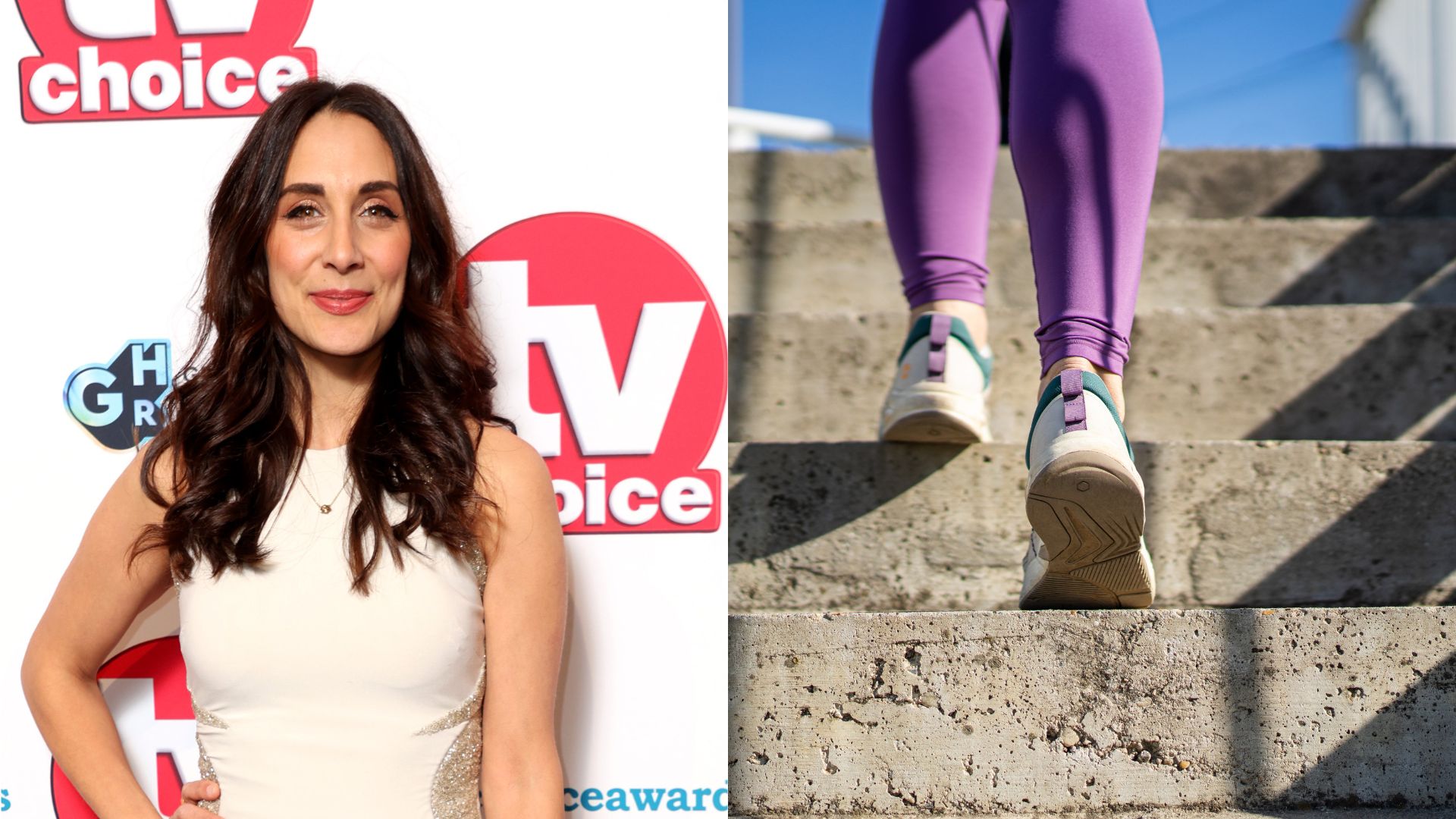
The trio on the sofa, which included hosts Cat Deeley and Ben Shephard with Dr Sara Kyat, discussed the benefits of slow walking for health reasons, including weight loss.
While we know that pulling on our walking shoes and walking as a workout is good for us, Dr Kayat said there's evidence that slow walking can help shift belly fat more effectively than faster-paced walking for those who are overweight.
“Lots of people think you have to be sweaty and breathless in order for exercise to be good for you. There are studies that show slow and steady still wins the race,” she explained.
The evidence is a study by the University of Michigan, which looked at overweight postmenopausal women and the impact of their walking pace on weight loss.
The participants were split into two groups. One walked at a pace of 5.5 kmph (3.4mph) and the other at 6.6 kmph (4.1mph). Both groups had to walk for 4.8km (3 miles), four times a week, for 30 weeks. The distance took the slow group an average of 54 minutes to complete each time and 44 minutes for the faster group.
"Slow walkers actually burnt more fat overall, including from around their belly area and that it was especially significant in those who were already more overweight to start with," said Dr Kayat.
The study also found that the slow walkers lost a significant percentage of their total body fat progressively over the 30 weeks.
Sign up to our free daily email for the latest royal and entertainment news, interesting opinion, expert advice on styling and beauty trends, and no-nonsense guides to the health and wellness questions you want answered.
A post shared by This Morning (@thismorning)
A photo posted by on
Why does slow walking help with losing belly fat?
The researchers point out that those in the slow walking group exercised for longer at a lower intensity. They would have burned more calories as a result.
Dr Kayat, who has a degree in physiology from King's College London, also said: "When you exercise at a lower intensity, the body relies on fat as its main source of energy, whereas when you exercise at a higher intensity, we use carbohydrates as the main source. Belly fat can be targeted a bit more in that slow and steady [pace]."
Those who are overweight also find it easier to burn calories than those of a lighter weight.
This is great news for those who love all the other benefits of walking and want to do some walking for weight loss. However, the key is exercising for longer at a lower intensity if you're overweight, rather than doing a specific type of exercise. You could also cycle, swim, paddle, or do Pilates and reap the same results.
There are many benefits to higher-intensity exercise (i.e. faster walking) as well. As Dr Kayat points out, this faster group had improved cardiovascular and respiratory fitness, which boosts heart and lung health.
"I think there's a role for both forms of exercise, but certainly if [losing belly fat] is what your aim is, then [slow walking] can be helpful," she said.
How long should you slow walk for to lose belly fat?
In the study the doctor talks about above, the participants walked 4.8km at a pace of 5.5km/h, four days a week. That's about an hour and a half of walking each time.
According to the NHS guidance on exercise, we should be doing 150 minutes of moderate-intensity exercise every week. That's exercise where you feel a little out of breath, but can still hold a conversation.
Along with slow walking, it's good to incorporate other types of exercise into your routine to hit this goal, like strength training or higher-intensity cardio, such as racket sports, running, cycling, or swimming.
Benefits of slow walking
- Helps stop bone mineral loss: The study also found that both types of walking - slower and faster - helped participants reduce the rate at which they lost bone density. As this is very common in menopause, it's a great benefit to slow walking.
- Lower impact: A slower walk will be less intense on the hips, knees, and ankles, making it a great option for those who are very overweight and/or have mobility issues.
- Helps with exercise recovery: If you're doing other types of exercise, a slow walk can be the perfect tonic to help your muscles unwind between sessions as it promotes blood flow in the same way that stretches for runners would.
- Good for mental health: Any exercise can help your brain unwind and lower your stress levels. Slow walking is one type.
- Easy to fit into your schedule: Slow walking, unlike more intense cardio exercise, is easier to fit into a routine. You won't be getting sweaty and need to change after your workout, and you don't have to set aside dedicated time.
How to add more slow walking into your routine
- Make it part of your routine: An early morning walk before work is a great way to start the day, and a walk after lunch helps you digest food and mentally refocus in the afternoon. If you can't squeeze that in, try small bursts of walking, like up and down the stairs a few times a day.
- Distract yourself: If you find walking boring, listen to music or a podcast. It's a great way to distract yourself.
- Don't aim for 10,000 steps: While we’re often told that 10,000 steps is the magic number we should be doing, research has shown that a smaller amount will still do us good. Research from Johns Hopkins University School of Medicine and the Medical University of Lodz found that walking a minimum of 3,867 steps a day can reduce the risk of premature death from all causes, with as few as 2,337 steps found to be beneficial enough to reduce the risk of cardiovascular disease.
- Mix up your workouts: Strength training has been called one of the "ideal" exercises for weight loss. So, mix up your workouts by learning how to do a plank, including a dumbbell session into your routine, or a quick full-body resistance band workout. As weight loss can impact muscle mass, it's important to strengthen them.

Kat Storr has been a digital journalist for over 15 years after starting her career at Sky News, where she covered everything from world events to royal babies and celebrity deaths. After going freelance eight years ago, she now focuses on women's health and fitness content, writing across a range of UK publications.
From perimenopause to the latest fitness trends, Kat loves researching and writing about it all. She's happy to give any fitness challenge a go and speaks to experts about wellbeing issues affecting people every day.
